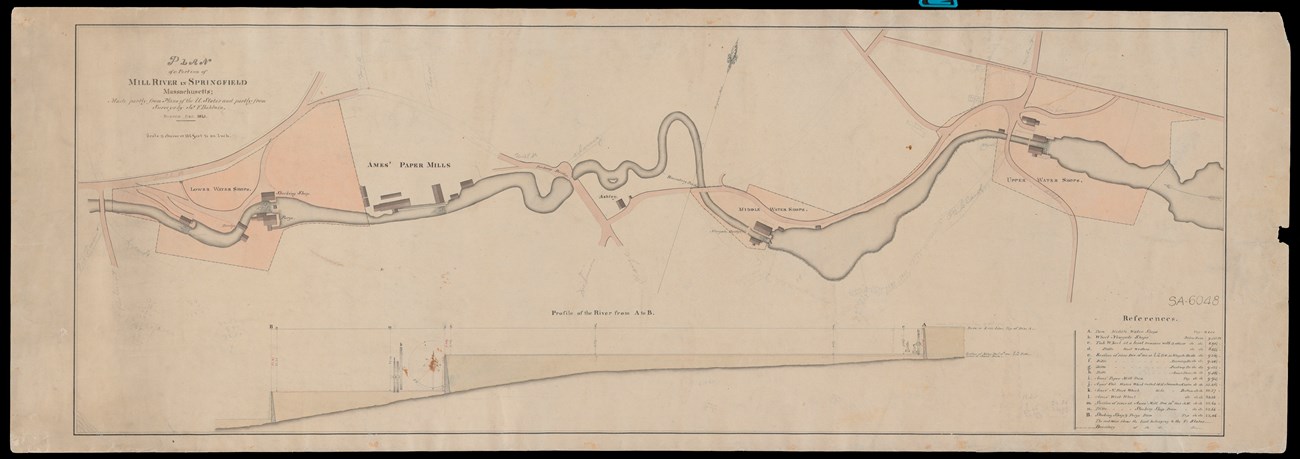
Photo Credit: Springfield Armory NHS Archives Using water wheels and later turbines to harness the energy of the Mill River, different machines including trip hammers, grindstones, polishing discs, and lathes were used to firearm parts. After the pieces were finished, they were sent to the Hill Shops for final assembly, inspection, storage, and distribution. 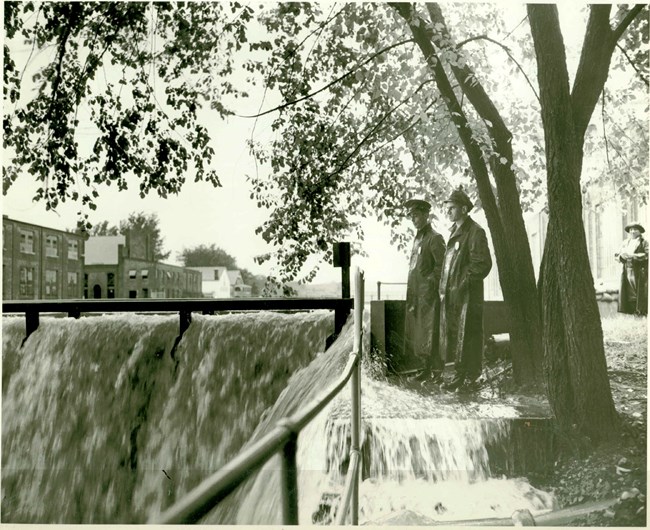
Photo Credit: Springfield Armory NHS Archives The looming challenge of the Mill River was the simple use of waterpower. The river was often prone to drought or even freezing, further reducing the waterpower and sometimes it flooded having a disastrous effect on the shops as it did in 1955. The Mill River didn’t provide sufficient power as the Armory expanded which led to the development of the Middle and Upper Shops, along with an increased number of waterwheels, turbines, increased dam height and eventually steam engines in 1843 and electricity in 1899. 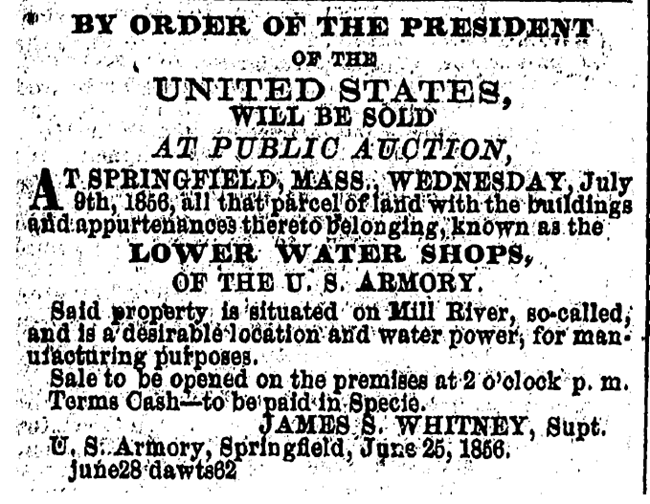
Photo Credit: Springfield Republican, June 28th 1856 With the closure of the Lower Shops, the Middle and Upper Shops took on more importance. The Middle Water Shops were acquired shortly after the Lower Shops. As the shops were located further up the river there was more power, and the Armory was able to operate more machinery. Before 1820 there were at least four trip hammers located here used for barrel welding. With the closing of the Lower Shops more operations were moved to the Middle Shops, but as a remodel got underway at the Upper Shops, the Middle Shops were no longer needed, and they were demolished in 1856. In 1809 an opportunity presented itself to the Armory to purchase the site of an old Revolutionary War Powder Mill located further up on the Mill River. Benjamin Prescott purchased the mill site along with the rights to build a dam in an area now known as the Upper Water Shops, which is the only remaining standing shops today. By 1822 the wooden dam was replaced by stone which provided more power, but not enough. With the addition of steam engines, production from the Lower and Middle Shops began relocating to the Upper Shops, and in 1855 all production was taking place at the Upper Shops. 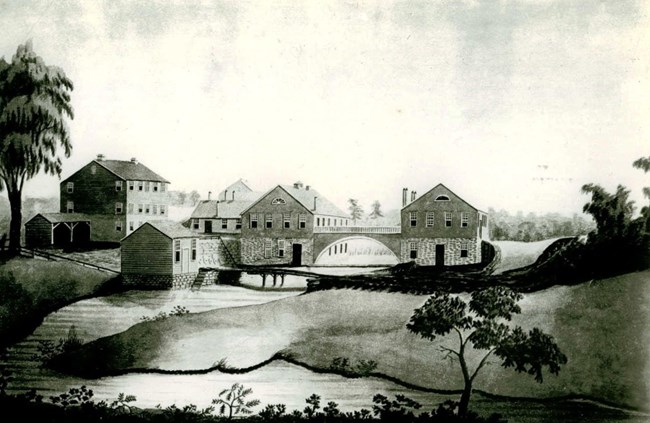
Photo Credit: Springfield Armory NHS Archives “There is much still remaining to be done, but the improvements are steadily progressing. The Water Shop is now a paragon in its line. It may well be doubted whether there is a manufacturing establishment in the world so well adapted to its purposes as this.” The Springfield Republican, October 30th, 1858
As production continued to increase appropriations were granted to further develop the Upper Shops. Major changes began in 1855 when work began to update the shops and lasted until 1858. A new addition, part of Building 201, was constructed which greatly expanded the manufacturing space and production ability. This shop consisted initially of five different departments, with room to add more. Each department had specialized functions including a machine and finishing shop, a forging shop, a rolling mill, a grinding mill, and an inspection shop. At the same time a new dam was built leading to the creation of Watershops Pond, a raceway and new wheel-pit, and a stone arched bridge were also added. The Upper Shops saw increased improvement over time with the addition of more buildings and reorganization of the shops leading it to become a state-of-the-art facility.
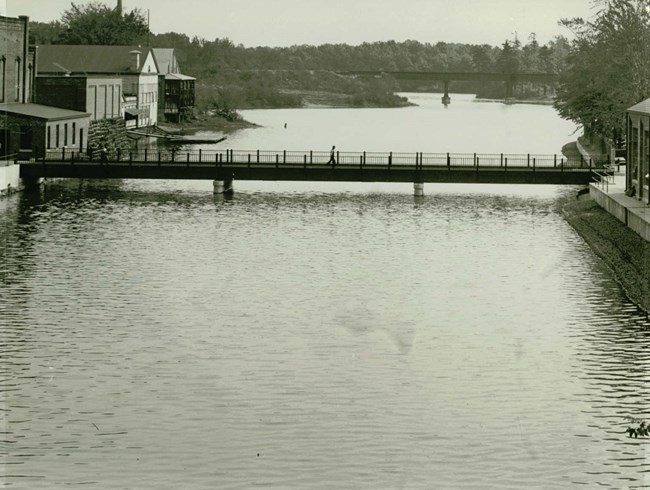
Photo Credit: Springfield Armory NHS The Water Shops continued as the heart of the Armory and firearms production until it closed in 1968. In 1980 the Water Shops were placed on the National Register of Historic Places. Today the Water Shops are privately owned manufacturing sites. While you are unable to view the interior of the buildings, you can view the exterior. As you do, take note of how while it is a mile away from the Armory, it echoes the commanding feeling with is brick structure and clock tower. |
Last updated: February 20, 2022
